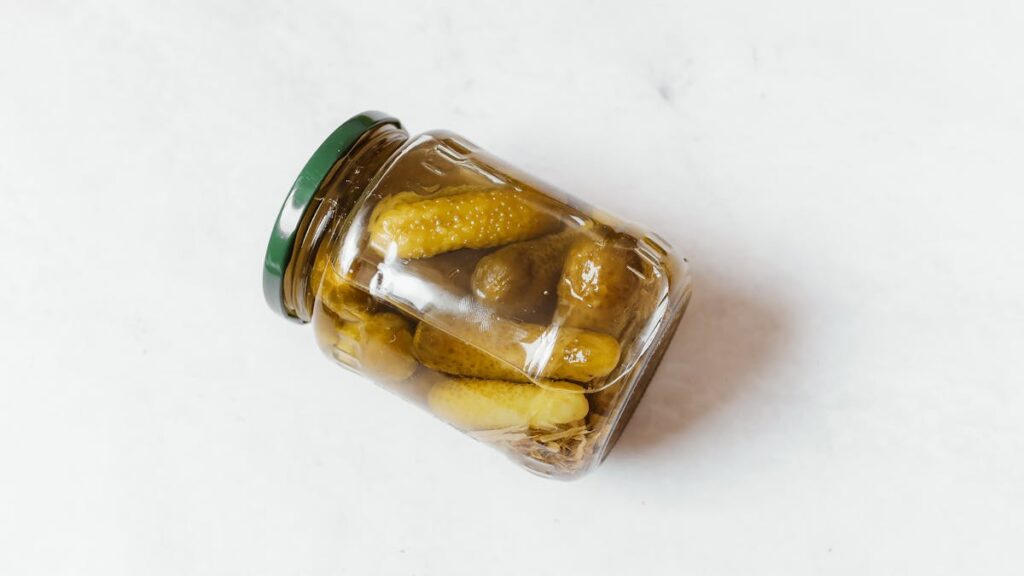Pickles have gained a lot of appeal as toppings for summertime picnics. According to one analysis, the pickles industry was estimated to be worth roughly $13 billion in 2023 and is expected to grow to almost $18 billion by 2032.
Dill, kosher, sweet, spicy, sour, Gherkin, cornichons, and bread and butter are just a few of the varieties of pickles that can be eaten whole, sliced, or diced. You can find them chopped or sliced on burgers, hot dogs, and deli sandwiches, as well as in various recipes and meals such as pasta salad, pickle butter, and, of course, fried pickles.
They are not only a terrific culinary topping, but they also offer other benefits, which this article will discuss. Read on!
Are Cucumbers and Pickles the Same?
Pickles are generally categorized as vegetables, even though they are a fruit, because they are created from cucumbers that have seeds within. To make them, cucumbers are soaked and fermented in a brine solution consisting of vinegar, salt, and spices.
ALSO READ: Unknown Menu Items From Your Favorite Restaurants
The substances a pickle soaks in determine its flavor. Simmered in a brine of vinegar, salt, and dill, dill pickles are probably the most well-known type. In addition to being prepared in the usual manner, sweet pickles contain some sugar.
While bell peppers, mustard seeds, or onions are added to the brine, bread and butter pickles are still considered sweet pickles.
Cucumbers are the most well-known pickled produce item, but green beans, beets, peppers, onions, zucchini, carrots, radishes, squash, turnips, and asparagus are also widely pickled.
Is Eating Pickles Healthy for You?
When considering wellness, it is only natural to question whether eating pickles is healthy for you. One of the most important health benefits of pickles is that they contain probiotics, which are “good” bacteria that protect your gut microbiota.
But how can you identify which pickles include probiotics and which do not? It all boils down to how they are created. Fermented pickles are particularly high in probiotics. Pickles prepared from berries and vegetables also contain a high concentration of minerals, including calcium, iron, and potassium, as well as vitamins A, C, and K.
POLL—Do You Support a Single-Payer Healthcare System (Medicare for All)?
Additionally, pickle juice contains a high concentration of potassium and sodium, which means it can help replace electrolytes in the body. Pickles, on the other hand, are not a viable substitute for electrolyte solutions after exercise.
Because most pickles are prepared from fruits and vegetables, they include antioxidants that help the body resist free radical damage.
Are Pickles Good for the Skin?
The answer lies in the nutrient density. Pickles contain vitamins A and E, powerful antioxidants that can protect your skin from free radicals. They also include plenty of vitamin K, which is essential for skin healing and wellness.
Vitamin A, also known as retinol, is a key player in maintaining and repairing skin health. It aids in the production of healthy skin cells and stimulates fibroblasts. As a result, they are a potential ally in fighting skin aging.
Pickles also contain vitamin E, an antioxidant that might improve your skin. It protects your skin from environmental hazards, including pollution and UV rays. This can help you avoid early skin aging and keep your skin appearing young and radiant.
Vitamin K is frequently disregarded when it comes to skincare, but it is quite important. It aids in the body’s blood clotting process, which is necessary for wound and bruise healing. This means pickles, which are high in vitamin K, can help your skin recover more quickly from injuries.
WATCH: These Beauty Hacks Will Keep Your Skin Healthy and Glowing at Home
How To Make Dill Pickles
Making dill pickles at home is a fun and rewarding experience! Here’s a basic recipe to get you started on making easy homemade dill pickles.
For the ingredients, you will need water, white vinegar, pickling salt, cucumbers (pickling cucumbers are best), cloves of garlic, peeled, fresh dill sprigs, mustard seeds, black peppercorns, and red pepper flakes (optional).
In a large pot, combine the vinegar, water, and pickling salt. Bring to a boil, then remove from the heat and let cool to room temperature. While the brine is chilling, sanitize the jars and lids by boiling them in water for 10 minutes.
Cut the cucumbers into rounds or spears. Add a few dill sprigs and a garlic clove to the bottom of each jar. Pack the cucumbers securely into the jars, seasoning with extra dill, garlic, mustard seeds, black peppercorns, and red pepper flakes as needed.
Pour the cooled brine over the cucumbers, leaving about a half-inch headroom at the top of each jar. Make sure the cucumbers are completely submerged.
Place the sterilized lids on the jars and seal. If you’re preparing refrigerator pickles, let them cool to room temperature before putting them in the fridge. For extended storage, process the jars in a hot water bath for 10 minutes.
You Might Also Like:
Everything We Know About Teddy Swims’ Girlfriend, Raiche Wright
Corn Harvesting Tips for the Best Flavor
Miley Cyrus Faces Copyright Lawsuit Over Hit Song “Flowers”
Caught in a Rip Current? Here’s How to Break Free and Stay Alive
High Fiber Foods: Your Guide to a Balanced Diet and Optimal Wellness
